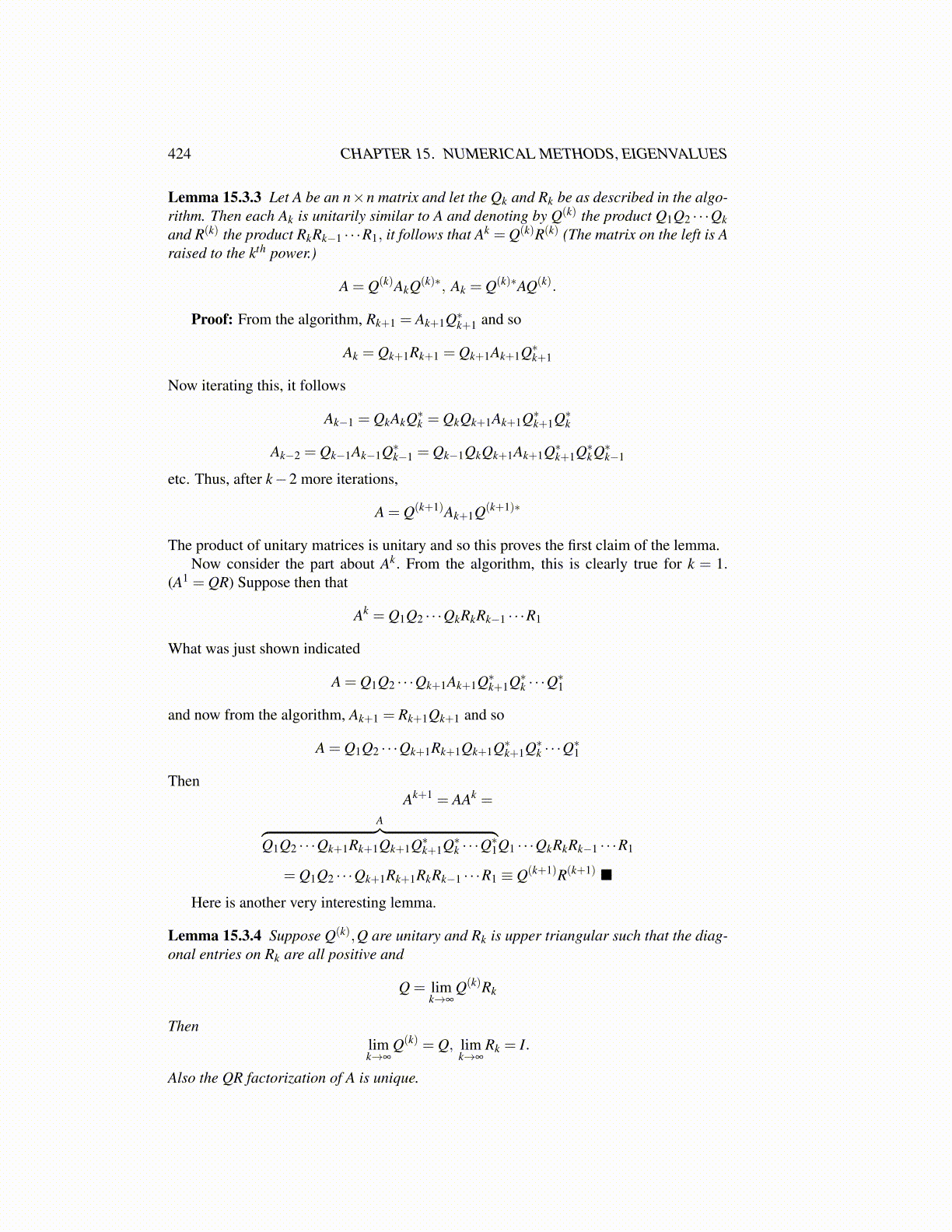
424 CHAPTER 15. NUMERICAL METHODS, EIGENVALUES
Lemma 15.3.3 Let A be an n×n matrix and let the Qk and Rk be as described in the algo-rithm. Then each Ak is unitarily similar to A and denoting by Q(k) the product Q1Q2 · · ·Qkand R(k) the product RkRk−1 · · ·R1, it follows that Ak = Q(k)R(k) (The matrix on the left is Araised to the kth power.)
A = Q(k)AkQ(k)∗, Ak = Q(k)∗AQ(k).
Proof: From the algorithm, Rk+1 = Ak+1Q∗k+1 and so
Ak = Qk+1Rk+1 = Qk+1Ak+1Q∗k+1
Now iterating this, it follows
Ak−1 = QkAkQ∗k = QkQk+1Ak+1Q∗k+1Q∗k
Ak−2 = Qk−1Ak−1Q∗k−1 = Qk−1QkQk+1Ak+1Q∗k+1Q∗kQ∗k−1
etc. Thus, after k−2 more iterations,
A = Q(k+1)Ak+1Q(k+1)∗
The product of unitary matrices is unitary and so this proves the first claim of the lemma.Now consider the part about Ak. From the algorithm, this is clearly true for k = 1.
(A1 = QR) Suppose then that
Ak = Q1Q2 · · ·QkRkRk−1 · · ·R1
What was just shown indicated
A = Q1Q2 · · ·Qk+1Ak+1Q∗k+1Q∗k · · ·Q∗1
and now from the algorithm, Ak+1 = Rk+1Qk+1 and so
A = Q1Q2 · · ·Qk+1Rk+1Qk+1Q∗k+1Q∗k · · ·Q∗1
ThenAk+1 = AAk =
A︷ ︸︸ ︷Q1Q2 · · ·Qk+1Rk+1Qk+1Q∗k+1Q∗k · · ·Q∗1Q1 · · ·QkRkRk−1 · · ·R1
= Q1Q2 · · ·Qk+1Rk+1RkRk−1 · · ·R1 ≡ Q(k+1)R(k+1) ■
Here is another very interesting lemma.
Lemma 15.3.4 Suppose Q(k),Q are unitary and Rk is upper triangular such that the diag-onal entries on Rk are all positive and
Q = limk→∞
Q(k)Rk
Thenlimk→∞
Q(k) = Q, limk→∞
Rk = I.
Also the QR factorization of A is unique.